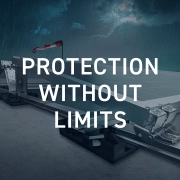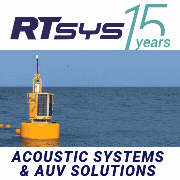– Leading renewable energy insurer analyses mitigation and prevention of potential project-crippling bottleneck
– Insurer notes 15 – 20 incidents per year in generator step up transformers in the global wind industry
London, 16th July 2015 – Asset managers and project owners must carefully consider contingency plans in order to mitigate the risk of transformer downtime, an infrequent yet severe incident that can lead to significant financial impairment of a renewable energy project.
As renewable energy developers look to reduce capital expenditure by designing larger projects with only one transformer in mind, it is not sufficient to simply offload the associated electrical infrastructure risk to a third party under contract.
That is according to specialist renewable energy underwriter, GCube Underwriting Ltd. (GCube), and echoes the findings of its latest client report Transformers: Age of Breakdown?
The generator step-up transformer is the critical component required for distribution of electricity to the grid. As such it is one of the most valuable parts of any generation facility, not only in terms of its associated manufacturing and installation costs, but also on account of its essential role in the export of power and subsequent revenue generation.
Each year, 15 to 20 generator step-up transformer incidents are reported in the global wind energy sector, while GCube estimates the total number of unreported downtime events to be several times higher. In line with expectations, this rate and severity of incidents has steadily increased with the expansion of the industry.
The financial impact of such incidents has, however, grown at a considerably faster rate due to site remoteness and prolonged downtime on larger project sites, often with only a single transformer, both in established markets such as the USA, Canada and Australia and emerging markets in Latin America and Africa.
This downtime is often greatly exacerbated by replacement lead times of 6 to 18 months. Despite a ramp-up in the supply chain, as the global renewable energy market expands, transporting transformers from manufacturing hubs in North America, Europe and Asia to remote project locations worldwide remains a considerable logistical undertaking.
A typical transformer for an onshore renewable energy project costs between $3 and $10 million to manufacture and install. Claims vary depending on the associated revenue lost, however $5 to $25 million is considered the typical range. The entire transformer market is estimated to be worth $20 to $22 billion in asset values. However the true value of a single transformer to an asset owner cannot be understated, since any downtime will prevent power export and directly impact project revenues, including possible offtake penalties.
This concerning trend has illustrated a growing requirement for project owners and operators not only to adopt more effective preventative maintenance regimes and ensure that they are suitably covered in insurance terms, but also to develop appropriate contingency strategies to minimise project downtime in the event of transformer failure.
GCube’s report, Transformers: Age of Breakdown? An Insurance Buyer’s Guide to Downtime Events, released today exclusively to GCube’s community of brokers and insureds, explores the challenges involved in striking a cost-effective balance in this regard.
“Owners of larger projects need to start weighing up the cost-benefit of their risk mitigation and contingency measures – whether it’s by building greater system redundancy into their electrical infrastructure or formulating robust repair and replacement strategies,” said report author Jatin Sharma, Head of Business Development, GCube.
“This will most likely be driven by a recognition of the severity of incidents on the balance sheet – and potentially higher insurance premium costs that weren’t factored into cash flow models at the start of the project.”
“In a market that is driven by cost competitiveness, it is clear that reducing the levelised cost of energy may be at the expense of delivering a more sustainable project to investors. However it only takes a handful of downtime events to demonstrate that this is an area where the impact is felt well beyond the insurance market.”
Transformers: Age of Breakdown? is the third in a series of GCube reports exploring the inherent risk and financial impact of component failure in the renewable energy industry, following on from Breaking Blades and Grinding Gearboxes.
Drawing from GCube’s extensive claims database, the report categorises all known causes of transformer failure, assesses the factors influencing cost of claims and proposes best practice monitoring approaches. This is followed by in-depth interviews exploring risk management and contingency planning with industry experts from AES, RIMKUS, GLID, CSL Global, AVC and RELA.
GCube’s insureds and brokers can request a copy of the report by emailing info@gcube-insurance.com.
About GCube
GCube is the leading provider of insurance services for renewable energy projects in wind, solar, biofuels, wave, hydro and tidal around the globe.
Its specialised focus and robust underwriting authority offers unparalleled marine, property, liability and political risk insurance coverage for all renewable energy risks. With over 25 year’s experience in the renewable energy sector, GCube understands the unique exposures of these power generation projects and assists its clients in identifying, quantifying and mitigating risk efficiently and economically while helping them achieve their business objectives.
To learn more about how we can support your insurance coverage requirements, please visit our website at www.gcube-insurance.com.





















